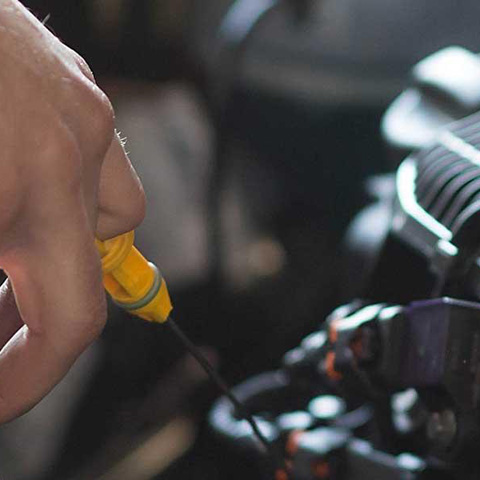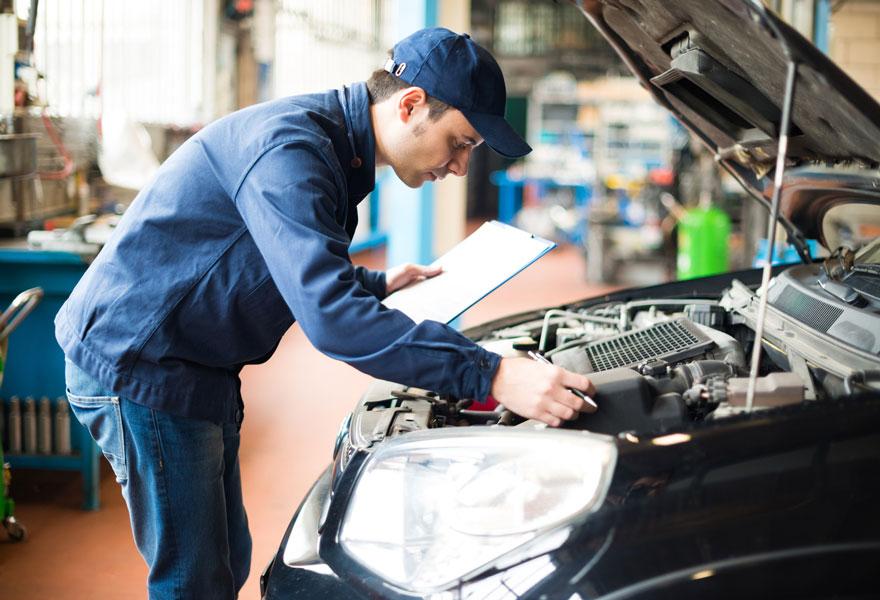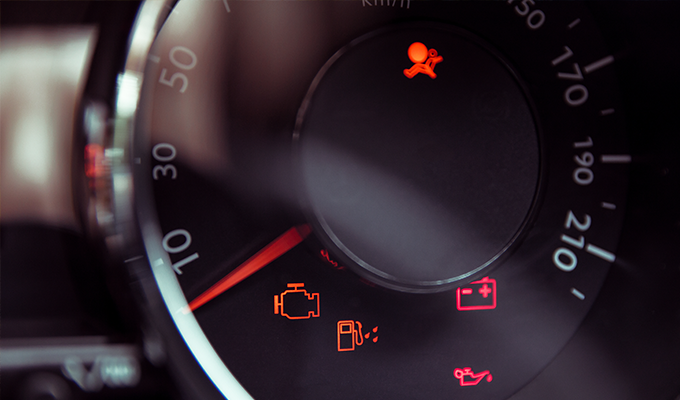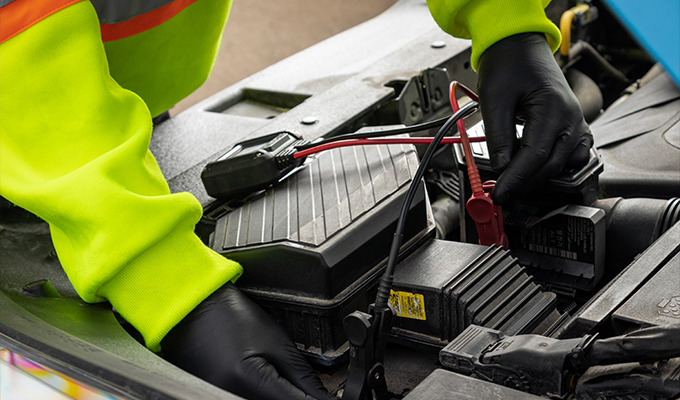

Maintenance & Repairs
Maintaining your vehicle can save time and money
Keeping your vehicle in good repair, and ensuring proper maintenance, is the best line of defence in insuring that your investment keeps motoring smoothly for years to come.
Staying up to date with your car's recommended maintenance schedule can actually prevent many costly repairs down the road. The maintenance schedule for your vehicle can be found in the owners manual.
In addition to scheduled maintenance there are several regular checks that many vehicle owners can perform on their own. Read on for some helpful advice.

Find a CAA Approved Auto Repair Facility
When you bring your vehicle into a CAA Approved Auto Repair Services (AARS) location you can be assured that you'll receive quality workmanship at a fair price. CAA has a variety of auto service repair facilities in the Niagara Region, for your convenience.
Maintenance Schedule
Reading your owner's manual is the first step in becoming an informed consumer. The manual explains how your car works as well as providing a detailed, recommended maintenance schedule specifically for your car.
If you don't have the owner's manual, locate a dealership that sells your type of vehicle, contact the parts department and ask them to order one for you. Keep the manual in your glove compartment for quick reference. It is the definitive source of maintenance information for your vehicle.
You can determine your vehicle's maintenance needs by paying attention to how and where you drive. Automobile manufacturers divide driving maintenance requirements into two categories – normal and severe. Follow the maintenance schedule that fits your driving habits.
By following your vehicle's maintenance schedule, you save money on repairing and replacing prematurely worn parts. You also may save money on fuel consumption because your car will be running properly.
Alignment
Proper wheel alignment can determine your tire's longevity, contribute to the overall safety of your vehicle and save you money, but hitting even one pothole or bump can throw off your alignment.
"When your wheels are perfectly aligned, the angles are parallel to one another and perpendicular to the road," says Lee Ricker, a mechanic with CAA Niagara.
"A car with alignment problems has to work harder to go in a straight line, putting extra stress on your tires and increasing fuel consumption. If your vehicle veers to the right or left when you're driving straight forward, or if your tires are more worn on one side, you need to have your alignment corrected."
Air Filters
Whether your car's engine has a carburetor or is fuel injection, whether it's powered by gasoline or diesel fuel, a clean air filter is a MUST. Many experts agree that changing your filters regularly may have more to do with prolonging the life of your vehicle than any other factor.
Have you noticed that your engine performance isn't what it used to be – especially at high speeds? Check your air filter. It may be dirty and can reduce your gas mileage as well as increase emissions.
Your air filter extracts dirt and dust particles from the air and should be checked with every oil change. If you can't see bright light, such as sunlight, through the filter at all points, it needs to be replaced.
If the filter is only slightly dirty, you can try cleaning it by tapping it – bottom side down – on a hard, flat surface. You should replace your air filter as needed. Air filters may need to be replaced more frequently if you live or drive on dirt roads or in dusty areas.
Batteries
Today's vehicles have more electrical demands than ever, and batteries play an essential role in meeting those demands. The battery supplies the electrical current that the starter motor requires to start the engine. It also provides power to the electrical components and accessories when the vehicle's engine is not running.
When the electrical load exceeds the charging system's capacity, the battery steps in to supply the extra current required. The battery also acts as a voltage stabilizer for the entire electrical system.
Do-it-yourself maintenance can play an essential role in maximizing the life of your battery. It is also important to have your battery and charging system checked at least once a year. Early detection of a weak component can save you time and money. CAA Mobile Battery Service has the proper testing equipment to perform a complete check of your vehicle's battery, as well as your vehicle’s charging and electrical systems.
Belts
Check your vehicle's belts with the engine off. When the engine is cold, you avoid accidental burns from a hot engine component or injuries caused by moving engine parts.
Carefully inspect the belts including edges and undersides for any signs of wear. Any visible sign of wear indicates a belt may need to be replaced or a belt-driven component may be failing.
Belt tension should be checked and adjusted on a regular basis. If the belt tension is too tight, it can cause bearings in the accessory components, or the engine itself, to wear prematurely. If it is too loose, the belt will slip and squeal, causing the accessory components to work less efficiently. Inadequate tension also will cause the belt to wear excessively. The most accurate way to check tension is with a belt tension gauge, but you can estimate correct tension by pressing on the belt along its longest straight section. If the tension is correct, the belt will only have about 1/2 inch to 1 inch of play.
Drive belts are necessary to operate the accessory components attached to the engine, such as the alternator, power steering pump, air conditioner compressor, and the water pump. To fully assess the condition of the belts, do a visual inspection and test the belt tension. Signs of wear and tear include glazing, pilling, and being visibly oil soaked.
Fluids
Whether your car's engine has a carburetor or is fuel injection, whether it's powered by gasoline or diesel fuel, a clean air filter is a MUST. Many experts agree that changing your filters regularly may have more to do with prolonging the life of your vehicle than any other factor.
Have you noticed that your engine performance isn't what it used to be – especially at high speeds? Check your air filter. It may be dirty and can reduce your gas mileage as well as increase emissions.
Your air filter extracts dirt and dust particles from the air and should be checked with every oil change. If you can't see bright light, such as sunlight, through the filter at all points, it needs to be replaced.
If the filter is only slightly dirty, you can try cleaning it by tapping it – bottom side down – on a hard, flat surface. You should replace your air filter as needed. Air filters may need to be replaced more frequently if you live or drive on dirt roads or in dusty areas.
Hoses
Hoses are used on many components of every vehicle. They carry liquids (fuel, coolant, transmission fluid) and gases (for air conditioning). Hoses also set vacuum-operated components (cruise control systems and power brake boosters) in motion by transferring vacuum from the engine. Hose Inspection:
Cold Engine Inspection: You should check for small leaks when the engine is cold. Firmly squeeze the radiator and heater hoses. A hose that feels very hard or makes a "crunch" as it is squeezed is deteriorating and should be replaced. Hoses that are extremely soft, sticky, or oil-soaked, should also be replaced because they are apt to fail. Driving your vehicle when the coolant is low may lead to serious engine damage so you should replace the hose as soon as possible.
Warm Engine Inspection: Use extreme caution around hot engine parts to avoid accidental burns. Drive the car long enough for the engine to fully warm up. Park, shut off the engine and open the hood. Check the upper radiator hose to ensure it is not collapsed. If it is, this indicates a problem and should be checked by a qualified technician.
Look carefully at all the hoses to spot any swollen areas that would indicate weak spots. Inspect around hose ends for dampness, deposits, or buildup of dried coolant. These indicate that a cold leak may be present. A cold leak is usually a minor leak that occurs after the vehicle has cooled down, and expansion and contraction of components has occurred. All coolant leaks should be attended to as soon as you notice them. Over time, these leaks will get worse and may lead to an expensive repair. An inexpensive gasket or a simple tightening of a hose clamp may be all that is needed to avoid an expensive repair.
Lighting System
Like tires and batteries, lights don't give warning when they are being neglected. Checking your vehicle's lights is a simple process. You should start your inspection by walking around the car with the headlights turned on and checking each light to make sure it is lit. Don't overlook the license plate lights, parking lights and side marker lights.
Next, turn off the headlights and turn on your four-way hazard flashers. Check all four corners again. Since most cars use the same bulbs for turn signals and hazard flashers, you have now checked the turn signal bulbs as well. To be sure the turn signal flasher is OK, turn the ignition on without starting the engine and check each turn signal once more, front and rear. Now, with the ignition still on and engine not running, make sure the parking brake is set firmly, then shift the transmission into reverse. If a helper is available, depress the brake pedal and have them look at the reverse lights and brake lights. If you don't have a helper, you can use a stick between the front seat and the brake pedal or a heavy object, such as a brick, to depress the brake pedal slightly while you go back to check the brake and reverse lights. It normally takes only about an inch of pedal movement to turn on the brake lights.
Checking and maintaining your vehicle's lighting system regularly is easy and can go a long way toward making your car safer.
Tires
Tires are the only part of the car that has direct contact with the road. They affect your vehicle handling, ride, braking and safety. For optimum performance, your vehicle must have the correct wheel alignment and your tires must have the correct air pressure, tread depth, and balance.
Checking your tires on a regular basis is an important step in protecting your safety and your automotive investment. Tire inspections should be performed monthly, at a minimum. If you drive over potholes and debris in the road, live in a cold climate, or drive long distances regularly, then you should inspect your tires more often. Always inspect your tires before a long trip. The more often these inspections are performed, the easier it will be to find a small problem, such as a nail in your tire, and fix it before it becomes a more expensive and time-consuming problem.
However, properly trained and equipped service personnel should perform some tire maintenance, including puncture repairs, tire replacement (mounting on the rim), tire rotation and balancing, and wheel alignment.
Tune-Ups
Is an engine tune-up a thing of the past? After all, modern engines have no points and condenser to replace, no carburetor to adjust, and spark timing is controlled by the car's computer. Most cars now even have direct ignition that replaces the distributor.
Is a tune-up necessary anymore? Yes, but today's procedure is different. Your car should be taken to a service facility for an engine inspection and computer scan about every 30,000 miles. An engine inspection allows the service technician to check all the engine functions by connecting your vehicle to a diagnostic analyzer. This computerized piece of equipment reveals problems in the ignition as well as the fuel and emissions systems. It also allows the technician to return the engine to factory specifications.
Spark plugs or other faulty parts will be replaced during the inspection. The technician may find only one or two components from a set to be faulty (such as spark plugs or ignition wires), and therefore will only replace the bad ones. However, since they are all the same age and have the same amount of wear, you can save yourself a future headache if you have the components replaced as a set.
Also have the electronic sensors in your engine and exhaust system checked as they too can deteriorate. By scanning your car's computer, in addition to a tune-up, you can spot faulty sensors and other miss-adjustments that can reduce gas mileage, cause running or idling problems, and increase emissions.
Not all cars with on-board computers are capable of being scanned. Many models in the mid-to late-1980s were not programmed to reveal this type of information during a scan. Therefore, the electronic sensors need to be checked manually. A properly trained technician will know how to determine the condition of your car's computer and sensors.
Don't be fooled by big fancy shops with elaborate machines, because a repair facility is only as good as its technicians. While certain equipment is a must, trained and certified technicians are the key when you are looking for a repair facility to perform this type of service. The technicians use the diagnostic machines as tools and they will be of little use if the technician doesn’t know what to do with them.
Warning Lights
Manufacturing costs often force auto designers to combine several warning signals in a single dashboard indicator, making it harder for drivers to understand the message. Read and understand your manual it in advance so that you can be calm and cool when the unexpected happens.
The two most common warning signals – water temperature and oil pressure – are frequently combined in a single engine light. When the engine light comes on, drivers must expect the worst and turn off the engine immediately. With separate warning lights or auxiliary gauges, a driver can distinguish a minor overheating situation from a more expensive repair. All cars built since 1981 have a built-in self diagnostic system with a check engine or power loss warning light that provides a different warning than the engine light. Check engine identifies a malfunction in the computerized engine controls under the hood.
The check engine warning light does not call for emergency attention, but prompt attention can keep the situation from worsening.
The brake warning light can be confusing, too. It usually indicates that the parking brake is engaged. It also may indicate one or more of the following conditions depending on the type of car.
- Brake fluid is low in the reservoir.
- Power assist for the brake system has failed.
- One of the dual braking systems has failed.
The alternator or charging system warning light checks only the presence of electrical pressure, commonly known as voltage, coming from the alternator. A loose drive belt can allow electricity to be present, but not in sufficient amounts to keep the battery charged.
To prepare for warning light conditions during driving:
- Clarify the exact interpretation of your car's warning lights by reading or re-reading the owner's manual.
- Plan a mental course of action in advance for what to do should a given warning light come on while driving.
- Compare the owner's manual of each car you own to understand the similarities and differences in warning lights that appear to be identical.
- When shopping for a new car, consider optional gauge packages that make it easier to interpret warning light messages

Summer Car Care Tips
Now that summer is here, it may be time to check if your car can take the heat. Before you head out on your next road trip, make sure your vehicle is properly prepared to handle the season.

Common car dashboard warning symbols
Whether you’re a new or seasoned driver, it’s important to know what your vehicle is telling you. Learn more about common warning symbols.

CAA Battery Service
We’ll test, replace and recycle your old battery on the roadside, and home or at your office – and if necessary, you can purchase a new CAA Battery right on the spot.
